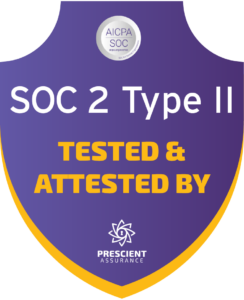
The CG 00 01, commonly called the Commercial General Liability (CGL) policy form, serves as the foundation of commercial liability insurance—acting as the main coverage document that has influenced risk transfer for many decades. This occurrence-based commercial general liability coverage form, sometimes called the CGL coverage form or occurrence coverage form, has undergone significant changes since its initial appearance, with every revision showing how business risks, legal decisions, and market needs have shifted over time.
Insurance professionals need to grasp these changes not just for academic purposes—it’s a practical requirement. Whether you’re examining policies from different editions, giving clients advice about coverage limits, or managing claims, the exact wording and terms in each version can greatly affect coverage results and professional responsibility. This means knowing related forms and endorsements like CG 20 26, CG 20 01, and other mandatory endorsements that might change the basic form.
Overview of CG 00 01
The CG 00 01 shows the Insurance Services Office’s (ISO) standardized method for commercial general liability insurance. This occurrence version covers bodily injury liability and property damage liability claims, plus personal and advertising injury coverage, when incidents happen during the policy period no matter when claims get filed later. The ISO GL form, as some call it, forms a key part of many commercial package policies.
Different from claims-made options, the occurrence structure of CG 00 01 gives policyholders long-term coverage confidence while setting up predictable risk factors for insurance companies. This basic feature has stayed the same across all versions of general liability forms, even though specific terms have changed to handle new exposures and legal changes.

Importance of CG 00 01 in Liability Insurance
The standardization that CG 00 01 and related general liability forms provide creates market efficiency and coverage predictability that helps everyone involved. Brokers and agents benefit from this consistency because it lets them make accurate coverage comparisons and give professional advice. Underwriters depend on standardized language to keep risk assessment and pricing methods consistent across different markets and business types.
Risk managers especially appreciate the occurrence-based structure when dealing with long-tail exposures that are common in manufacturing, construction, and product liability situations. The form’s wide coverage approach, limited by specific exclusions like the professional liability exclusion and auto liability exclusion, offers complete protection while keeping premiums reasonable through clearly defined boundaries.
The Origin of the CG 00 01 Form

Standardized liability forms were developed because the insurance industry needed consistent coverage language and simplified administration. Before standardization, individual carriers wrote their own policy forms, which caused coverage gaps, overlaps, and major administrative complexity for everyone involved in insurance transactions.
ISO’s earlier organizations started creating standardized forms in the early 1900s, with the modern CG 00 01 structure developing through the 1970s and 1980s. The form’s design reflects decades of legal precedent, claims experience, and actuarial analysis, creating a balanced risk transfer approach that works for various commercial exposures.
The Role of ISO in Insurance Standards
ISO works as the leading statistical and advisory organization for property-casualty insurance, creating standardized forms and related materials that the industry uses. The organization does more than develop forms—it also provides low-cost data, risk classification systems, and technical guidance that supports consistent underwriting practices for ISO GL forms and other insurance products.
When ISO releases new form editions, the decision usually comes from thorough analysis of emerging risks, legal changes, regulatory updates, and market feedback. This systematic approach means changes between editions represent real improvements rather than minor adjustments, making version awareness essential for professional competence.
What is ISO CG 00 01?
The ISO CG 00 01 commercial general liability coverage form creates the basic structure for occurrence-based liability insurance. The form has five main sections: Coverage A (bodily injury and property damage liability), Coverage B (personal and advertising injury liability, including coverage for invasion of privacy), Coverage C (medical payments), Coverage D (supplementary payments), and Section V (policy conditions, including the other insurance condition).
This design allows for systematic coverage analysis while keeping flexibility for endorsement changes. The form’s “insuring agreement plus exclusions” structure creates broad initial coverage that gets refined through specific exclusions and limitations, allowing for predictable coverage interpretation and consistent claims handling. Understanding “who is insured” and the “insured contract definition” matters for proper policy interpretation.
Comparison of CG 00 01 04 13 and Earlier Versions

The movement from earlier versions to the CG 00 01 07 and current editions shows how the insurance industry responds to changing risk landscapes and legal environments. Each version includes lessons learned from claims experience, court decisions, and regulatory developments that happened during the previous period.
Main evolutionary themes include broader exclusions for emerging risks, clearer definitions to reduce confusion, improved coverage triggers to reflect legal developments, and better conditions to improve policy administration. These changes together show the form’s ability to adapt to changing commercial environments while keeping core coverage principles.
A Look at CG 00 01 10 93
The 1993 edition brought significant modernization to commercial general liability coverage, adding several provisions that still influence coverage today. This version broadened the definition of “occurrence” to better handle gradual pollution exposures, improved the products completed operations coverage to clarify trigger points, and added enhanced waiver of subrogation provisions.
Especially important was the change to exclusions related to damage to your product and damage to your work, creating clearer boundaries between general liability coverage and professional liability exclusions. The 1993 edition also strengthened the duty to defend language, giving more definite guidance for coverage counsel assignments and defense cost allocations.
Exploring CG 00 01 07 98
The 1998 revision focused mainly on clarifying existing language rather than adding revolutionary changes. Notable changes included improved definitions of “executive officers” and “independent contractors,” expanded coverage for “leased workers,” and clarified applications of the general aggregate limit in various coverage scenarios.
This edition also addressed growing concerns about contractual liability coverage by improving exclusionary language and expanding the contractual liability coverage exceptions. The changes reflected increased sophistication in commercial contracting and the need for liability insurance to handle complex business relationships while maintaining appropriate coverage boundaries.
Highlights of CG 00 01 10 01
The 2001 edition added several significant changes responding to legal developments and market feedback from the previous version. Significant changes included expanded exclusions for professional services, improved coverage for malicious prosecution claims, and clarified treatment of wrongful eviction exposures.
The 2001 version also addressed coverage questions that had come up from court decisions interpreting earlier forms, particularly regarding the continuous injury trigger and the application of coverage to suit seeking damages scenarios. These clarifications provided greater certainty for claims handling and coverage determinations.
Summary of the CG 00 01 04 13
The 2007 edition marked another evolutionary step, with particular attention to emerging technology risks and evolving business practices. Key changes included expanded exclusions for electronic data risks, improved coverage boundaries for advertising injury coverage, and clarified applications of the liquor liability exclusion.
This version also added enhanced provisions addressing “damages because of” language interpretation, providing clearer guidance for coverage analysis in complex liability scenarios. The changes reflected the industry’s growing awareness of cyber-related exposures and the need for more precise coverage boundaries.
Explaining the CG 00 01 04 13
The current 2013 edition represents the most comprehensive revision in recent years, addressing numerous emerging risks while improving existing coverage provisions. Major changes include expanded cyber-related exclusions, clarified contractual liability provisions, and enhanced medical payments coverage parameters.
The 2013 version added significant changes to exclusionary language addressing access to confidential information, electronic data corruption, and related technology exposures. These changes reflect the insurance industry’s recognition that traditional liability coverage requires clear boundaries when addressing cyber risks that may be better addressed through specialized coverage forms.
The form also improved coverage conditions regarding policy notice requirements, cooperation provisions, and settlement procedures. These changes improve policy administration while providing clearer guidance for all parties during the claims process.
Additionally, the form now works better with endorsements like CG 20 11 and CG 24 04 that modify coverage terms. Understanding how these endorsements interact with the base form helps professionals provide complete coverage analysis.
Conclusion

The evolution of CG 00 01 shows the insurance industry’s commitment to maintaining relevant and effective liability coverage in a changing risk environment. Each version reflects careful analysis of claims experience, legal developments, and market needs while preserving the fundamental coverage principles that make commercial general liability insurance effective.
Insurance professionals must stay current with form versions and understand the implications of changes—it’s not optional, it’s a professional requirement. Whether analyzing existing coverage, recommending policy modifications, or handling claims, the specific language and provisions of each edition can significantly impact coverage outcomes and professional effectiveness.
The progression from early versions through the current 2013 edition shows consistent themes: expanded exclusions for emerging risks, clarified definitions and conditions, and refined coverage triggers that reflect legal and business developments. Understanding these patterns helps professionals anticipate future changes and better serve their clients’ evolving risk management needs.
As the risk landscape continues evolving with technological advancement, changing legal environments, and new business models, future editions of CG 00 01 will undoubtedly continue this evolutionary process. Professional competency requires not just understanding current forms, but appreciating the developmental patterns that inform ongoing changes in commercial liability coverage. This includes staying informed about related endorsements that may modify the base form’s coverage terms.
Frequently Asked Questions
CG 00 01 is the standard ISO Commercial General Liability occurrence form, while CG 00 02 is the claims-made version, meaning coverage is triggered based on when a claim is made rather than when the incident occurs.
An occurrence form covers incidents that happen during the policy period regardless of when the claim is filed, while a claims-made form only covers claims first made during the policy period (subject to retroactive dates and reporting requirements).
ISO typically updates liability coverage forms every 5–10 years, though updates may occur sooner if prompted by legal, market, or regulatory changes.
The 2013 edition added clarifications on contractual liability, broadened certain exclusions (e.g., electronic data, access or disclosure of confidential information), and refined terms to address emerging risks like cyber-related claims.
Occurrence forms (CG 00 01) are common in construction, manufacturing, and retail where risks are long-tail, while claims-made forms (CG 00 02) are more common in professional services, healthcare, and industries with evolving liability exposures where claims may surface years later.

